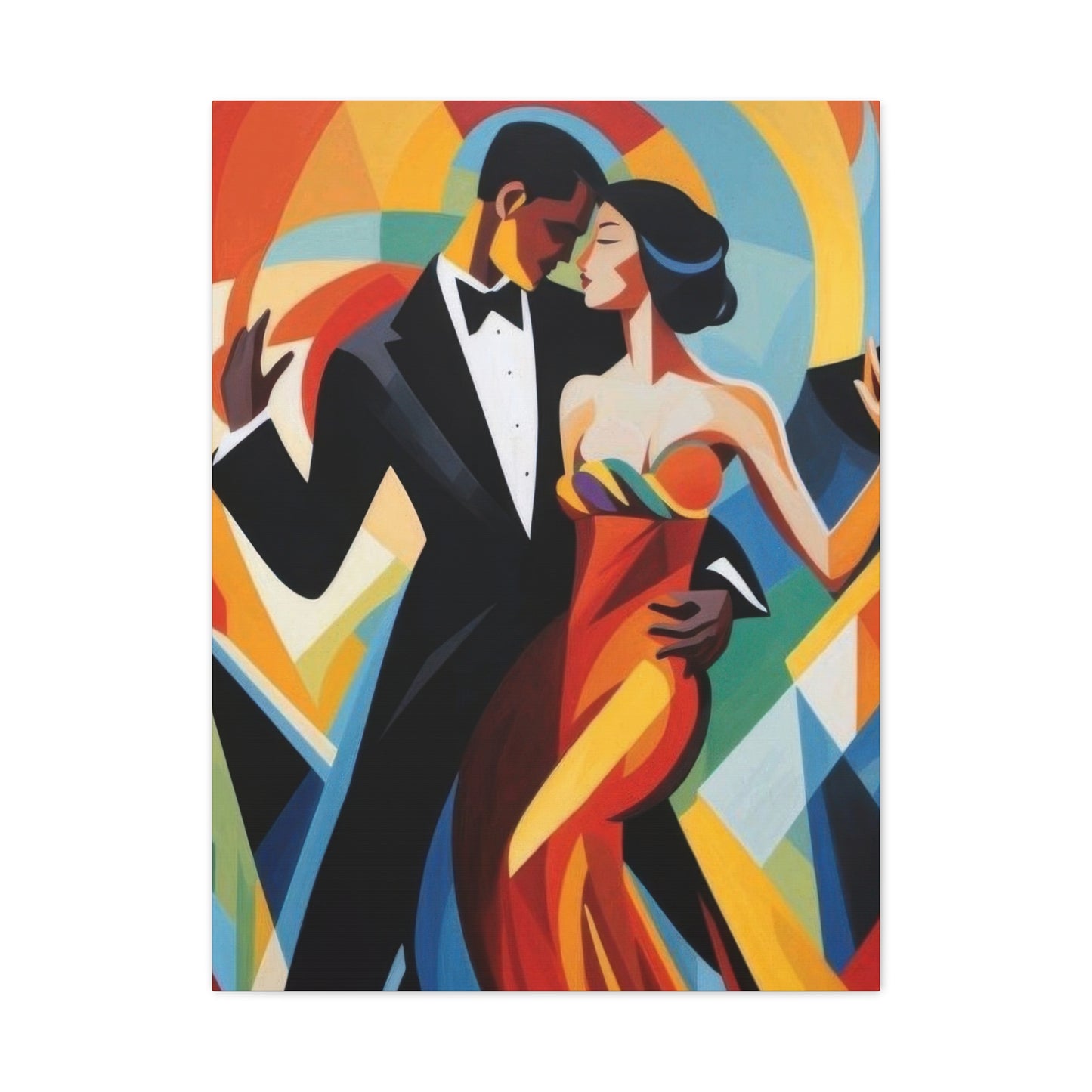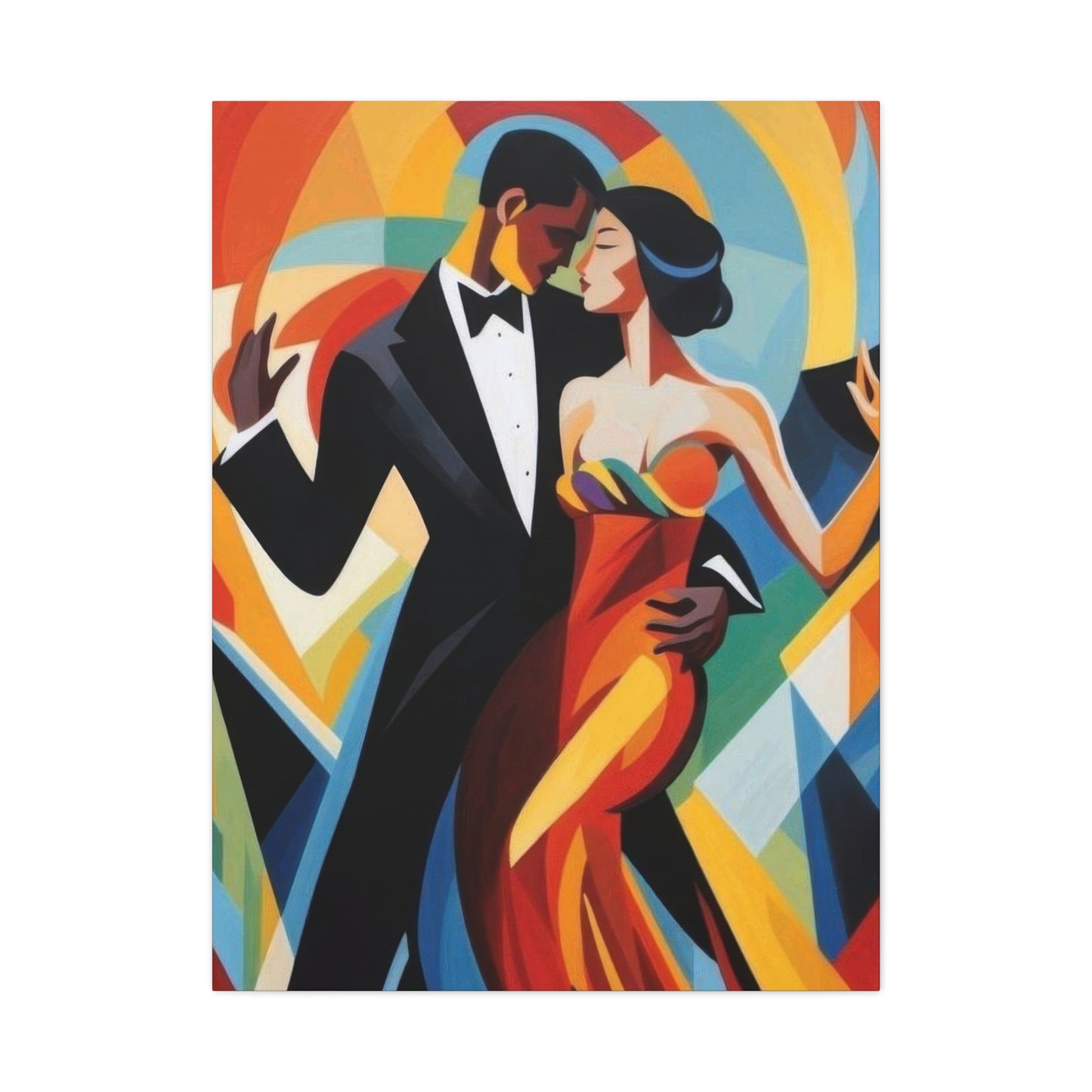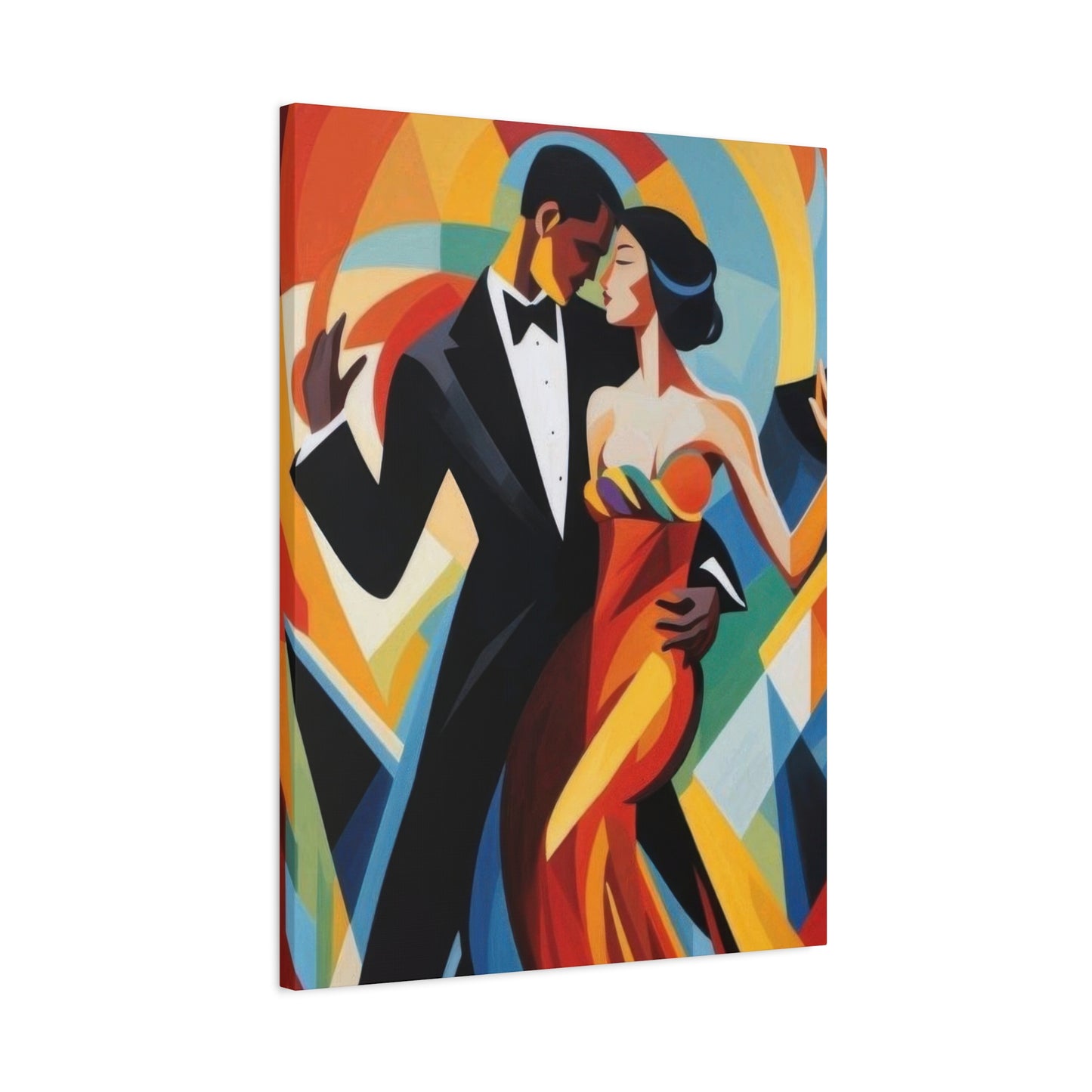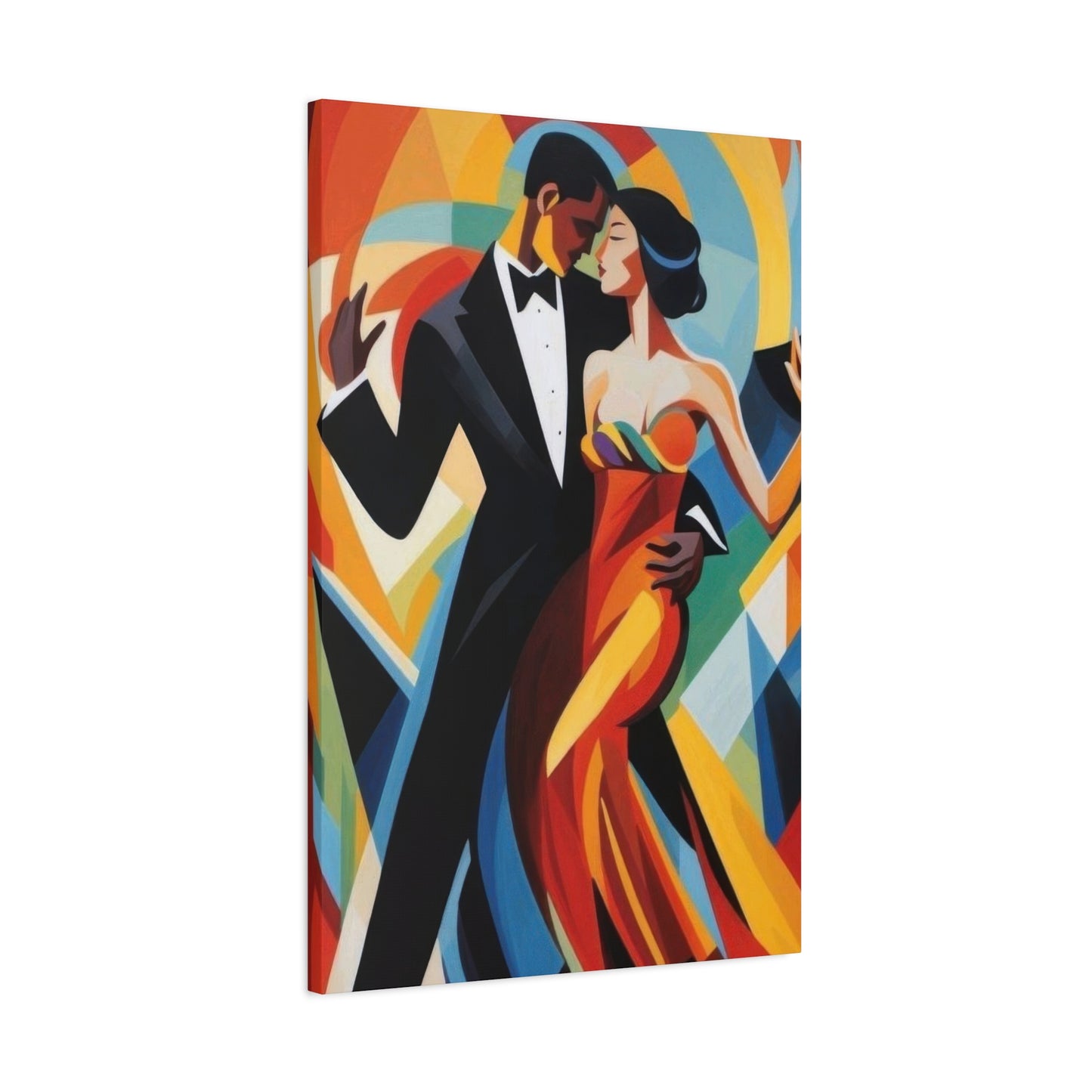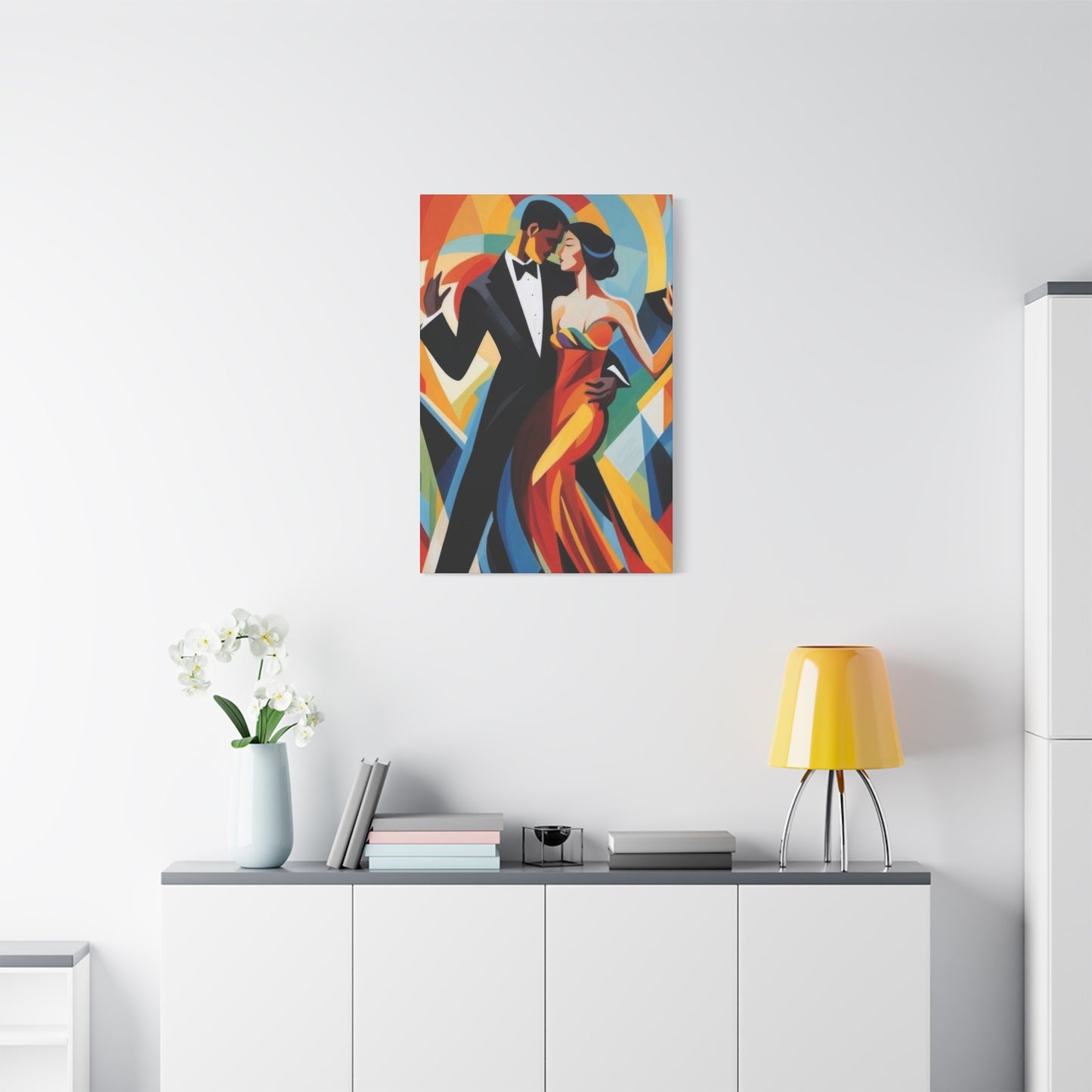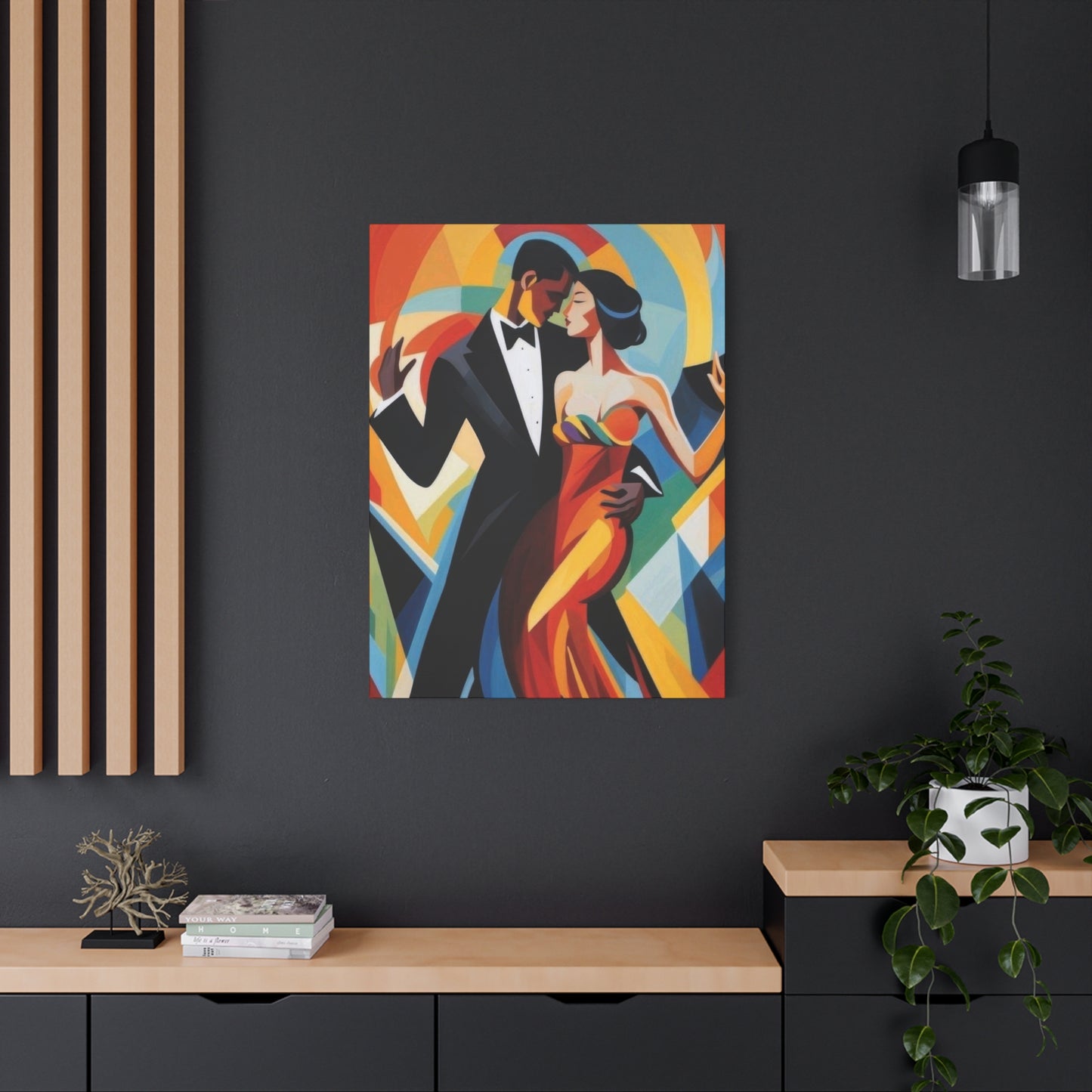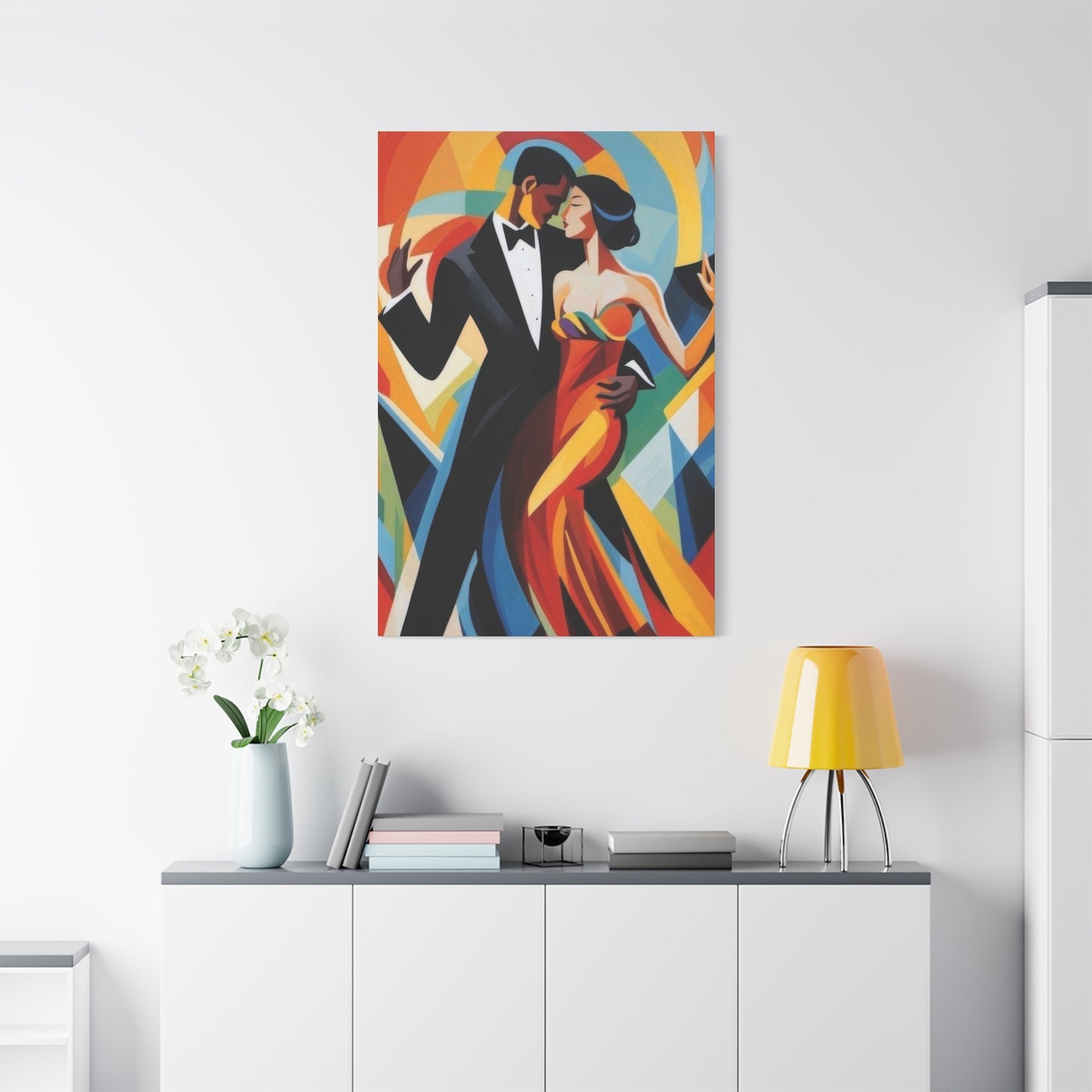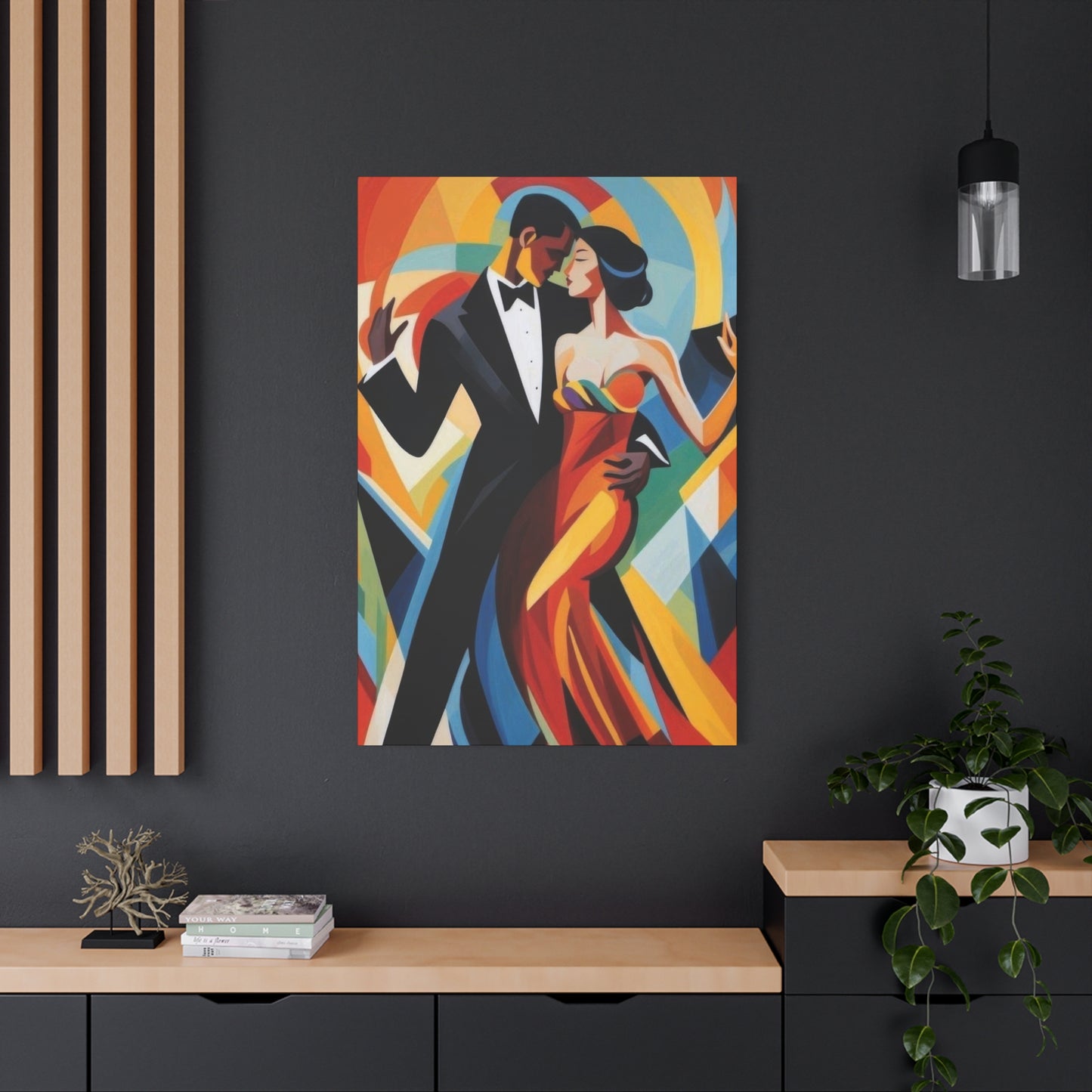The Glamour of Ballroom Deco Wall Art: Bringing Timeless Elegance to Your Home
Transforming your living space into a sanctuary of elegance and sophistication begins with understanding the captivating world of ballroom-inspired interior aesthetics. This distinctive design philosophy draws inspiration from the grandeur of historic dance halls and the opulent gatherings of a bygone era, where every detail spoke of refinement and cultural sophistication. When you introduce these elements into your residence, you are not merely decorating walls but curating an atmosphere that echoes with timeless grace and architectural beauty.
The essence of this decorative approach lies in its ability to transport inhabitants and visitors alike to an era when craftsmanship and artistic expression were paramount. Each piece serves as a window into a period where social gatherings were elevated to art forms, and the spaces that hosted them were designed with meticulous attention to visual harmony. The geometric patterns, rich metallic accents, and symmetrical compositions characteristic of this style create visual narratives that speak to both historical appreciation and contemporary aesthetic sensibilities.
Incorporating these design elements into your home requires an understanding of balance and proportion. The visual language of this decorative tradition emphasizes clean lines, bold contrasts, and a sense of vertical grandeur that draws the eye upward, creating an illusion of expanded space and heightened ceilings. This effect proves particularly valuable in modern homes where architectural details may be minimal, allowing artwork to provide the decorative substance that transforms ordinary rooms into extraordinary living environments.
The color palettes associated with this aesthetic tradition typically feature dramatic combinations of black and gold, silver and white, or deep jewel tones paired with metallic highlights. These choices reflect the theatrical lighting and luxurious materials of historic entertainment venues, where every surface was designed to catch and reflect light in mesmerizing ways. When you select pieces for your own space, consider how natural and artificial light sources will interact with these colors throughout the day, creating dynamic visual experiences that evolve from morning to evening.
Beyond mere decoration, this approach to interior styling represents a lifestyle choice that values sophistication and cultural refinement. It suggests an appreciation for the arts, particularly dance and music, and communicates to others that your home is a space where beauty and elegance are not just appreciated but actively cultivated. This makes it an ideal choice for individuals who view their living spaces as expressions of personal taste and cultural literacy rather than simply functional environments.
How to Incorporate Ballroom Deco Art into Modern Spaces
Bridging the gap between historical design sensibilities and contemporary living requires thoughtful planning and strategic placement. The first consideration when introducing these elegant elements into modern interiors involves assessing your existing architectural features and color schemes. Modern spaces often feature neutral palettes and minimalist architectural details, providing an ideal blank canvas upon which these more ornate and visually rich pieces can make dramatic statements without overwhelming the overall aesthetic.
Begin by identifying focal points within your rooms where these artistic elements can command attention without competing with other design features. In living areas, the wall space above a sofa or fireplace mantel typically offers prime real estate for a substantial piece that can anchor the entire room's visual composition. The scale of your selection matters tremendously in these applications; a piece that is too small will appear lost and insignificant, while one that is appropriately sized will establish visual authority and create a sense of intentional design.
The integration process also demands attention to complementary furnishings and accessories. Modern furniture with clean lines and simple silhouettes actually enhances rather than conflicts with more ornate visual elements. This juxtaposition creates dynamic tension that makes both the contemporary and vintage-inspired elements appear more intentional and thoughtfully curated. Consider how a sleek, minimalist sofa upholstered in a solid color can provide the perfect counterpoint to an elaborate geometric composition hanging above it, allowing each element to shine without visual competition.
Lighting strategy plays a crucial role in successfully incorporating these pieces into contemporary settings. The metallic elements and reflective surfaces common in this aesthetic tradition depend on proper illumination to achieve their full visual impact. Consider installing adjustable track lighting or picture lights that can be directed to highlight specific features of your chosen pieces. The interplay between light and shadow that results from strategic illumination enhances the dimensional qualities of geometric patterns and creates the sense of movement and vitality that characterized the original ballroom environments.
Color coordination between your existing decor and new artistic additions requires careful consideration but need not be restrictive. While you might initially assume that only rooms with specific color schemes can accommodate these elements, the reality is far more flexible. Neutral rooms in grays, whites, and beiges provide excellent backgrounds that allow the rich colors and metallic accents of these pieces to stand out dramatically. Alternatively, rooms with bolder color palettes can incorporate complementary pieces that echo existing tones while adding new layers of visual interest through pattern and texture.
Texture mixing represents another essential strategy for successful integration. Modern spaces often rely heavily on smooth, sleek surfaces in materials like glass, polished wood, and leather. Introducing visual elements that suggest different textures through artistic representation creates sensory variety that makes spaces feel more complex and interesting. Even though these are two-dimensional pieces, the visual suggestion of fabric draping, metallic sheen, or architectural ornamentation adds implied tactile diversity that enriches the overall sensory experience of the space.
Ballroom Deco Wall Art: A Touch of Vintage Elegance
The vintage character of these decorative elements offers a unique opportunity to infuse contemporary homes with historical charm and nostalgic appeal. This particular aesthetic captures a specific moment in design history when ornamentation was celebrated, craftsmanship was revered, and visual extravagance was considered a virtue rather than excess. When you introduce these elements into your modern home, you create a dialogue between past and present that enriches both, suggesting continuity and connection across generations.
The vintage quality inherent in this design approach manifests through several distinctive characteristics. Symmetrical compositions echo the formal balance valued in earlier architectural traditions, where mirror-image arrangements conveyed harmony and order. Geometric patterns reference both the mathematical precision of early modern design movements and the decorative traditions of various global cultures, creating visual vocabularies that feel simultaneously familiar and exotic. These patterns often feature repeated motifs that create rhythmic visual experiences, drawing the eye across the composition in ways that suggest musical cadences or dance movements.
Metallic accents represent another quintessential vintage element that distinguishes this aesthetic from other design traditions. Gold, silver, bronze, and copper tones reference the luxurious materials used in original installations where no expense was spared in creating environments worthy of special occasions. These metallic elements catch and reflect light in ways that create dynamic visual experiences, with appearances that change throughout the day as natural light shifts and evening illumination takes over. This quality ensures that pieces remain visually engaging rather than static, offering new discoveries and observations even after years of daily viewing.
The vintage appeal extends beyond purely visual qualities to encompass the cultural associations and emotional resonances these pieces evoke. They recall an era of social formality and celebration, when dressing up and going out represented important cultural rituals. This nostalgia for a seemingly more elegant and refined past has powerful emotional dimensions that make these decorative choices feel meaningful rather than arbitrary. In a contemporary world that often feels rushed and casual, these elements provide visual reminders of times when beauty and ceremony were prioritized.
Historical authenticity need not constrain your decorative choices, however. While some collectors seek pieces that genuinely date from earlier periods, contemporary interpretations and reproductions offer several advantages for modern homeowners. New production pieces can be created in sizes and configurations that suit contemporary wall dimensions and room proportions, which may differ significantly from historical standards. Modern printing technologies also allow for more vibrant colors and sharper details than were possible with earlier production methods, enhancing visual impact while maintaining stylistic authenticity.
The vintage character of these elements also provides opportunities for storytelling and personal expression. Each piece can serve as a conversation starter, prompting discussions about historical periods, design movements, and cultural traditions. This narrative dimension adds intellectual and emotional depth to your decorative choices, transforming them from mere visual objects into meaningful artifacts that reflect your interests, knowledge, and values. Guests who notice and comment on these pieces reveal shared interests and provide opportunities for connection over common appreciations.
The Art Deco Influence in Ballroom-Themed Wall Art
Understanding the specific design movement that profoundly influenced ballroom aesthetics provides valuable context for appreciating and selecting appropriate pieces for contemporary interiors. This influential design philosophy emerged during the early twentieth century and quickly became synonymous with modernity, luxury, and sophisticated taste. Its characteristic features and underlying principles continue to inform contemporary design practice, making pieces influenced by this movement feel relevant rather than merely historical.
The geometric emphasis that defines this design movement represents one of its most recognizable and influential characteristics. Angular patterns, symmetrical arrangements, stepped forms, and radiating compositions create visual dynamism while maintaining formal order and control. These geometric foundations distinguish this aesthetic from earlier decorative traditions that relied more heavily on organic forms and naturalistic references. The mathematical precision and abstract nature of these patterns give them a timeless quality that transcends specific historical moments, explaining their continued appeal across nearly a century.
The synthesis of influences from various global cultures represents another defining feature of this design philosophy. Rather than adhering to single stylistic traditions, designers drew inspiration from Egyptian, Aztec, African, and Asian sources, combining these diverse references into new compositional vocabularies. This cosmopolitan approach created visual languages that felt simultaneously exotic and sophisticated, offering alternatives to conventional European decorative traditions. Contemporary pieces that reference this eclecticism maintain this quality of cultural synthesis, creating visual interest through unexpected combinations and juxtapositions.
The celebration of modern materials and technologies distinguished this movement from previous design philosophies that often concealed or disguised industrial production. Designers embraced chrome, glass, steel, and other machine-age materials, celebrating their inherent qualities rather than attempting to make them resemble traditional substances. This honest relationship with materials and production methods aligned with broader modernist principles while maintaining the decorative richness that distinguished this movement from more austere modern approaches. The resulting aesthetic balance between ornamentation and functionalism created solutions that felt both beautiful and appropriate to contemporary life.
The vertical emphasis characteristic of this design movement proved particularly influential in shaping architectural and decorative approaches. Stepped forms, ziggurat profiles, and soaring vertical lines created dynamic compositions that suggested ambition, progress, and reach toward the future. This vertical thrust counteracted the horizontal orientation of much earlier architecture, creating dramatic silhouettes that dominated urban skylines and interior spaces. Contemporary pieces that incorporate this vertical emphasis tap into these associations, suggesting aspiration and upward movement that creates psychological lift and emotional optimism.
Luxury materials and rich color palettes distinguished high-quality examples within this design tradition from more modest interpretations. Gold leaf, exotic woods, ivory, jade, and precious stones appeared in original installations, creating environments of unprecedented opulence. While contemporary pieces typically employ more accessible materials and production methods, they often reference this luxurious character through metallic finishes, jewel-tone colors, and rich contrasts that suggest expensive materials. This quality of suggested luxury makes these elements effective tools for creating sophisticated atmospheres without requiring massive investments in actual precious materials.
The integration of figurative elements with geometric abstraction created distinctive compositional approaches that distinguished this movement from purely abstract modernist traditions. Stylized human figures, particularly dancers and musicians, appeared in compositions that balanced representational content with geometric simplification and pattern. This synthesis of figuration and abstraction created accessible visual narratives while maintaining the formal sophistication valued by modernist sensibilities. Contemporary pieces that reference this tradition benefit from this balance, offering recognizable subject matter within compositionally sophisticated frameworks.
Creating Sophistication with Ballroom Deco Wall Art
Sophistication in interior design represents more than mere expense or adherence to current trends. True sophistication emerges from thoughtful curation, attention to detail, and the creation of environments that reflect genuine taste and cultural awareness. Incorporating these elegant decorative elements provides opportunities to cultivate sophisticated atmospheres through choices that demonstrate historical knowledge, aesthetic discernment, and commitment to quality.
The editing process represents a crucial component of achieving sophisticated results. Sophistication often involves restraint and selectivity rather than abundance and accumulation. When working with these visually rich elements, resist temptations to over-decorate or fill every available wall surface. Instead, identify key locations where carefully chosen pieces can make strong statements while allowing surrounding areas to provide visual breathing room. This disciplined approach creates environments that feel curated and intentional rather than cluttered or chaotic.
Quality considerations prove essential when selecting pieces intended to create sophisticated atmospheres. While budget constraints affect all decorating projects, sophisticated results depend more on careful selection within available means than on unlimited spending. Prioritize pieces that demonstrate attention to detail, sophisticated color relationships, and refined execution rather than simply purchasing numerous inexpensive items. A single high-quality piece typically contributes more to sophisticated atmosphere than multiple mediocre alternatives, making strategic investment in fewer but better pieces a sound approach.
Color harmony between decorative elements and surrounding environments requires careful attention in sophisticated spaces. Avoid jarring contrasts or clashing color combinations that create visual discord. Instead, seek pieces that either harmonize smoothly with existing palettes or provide deliberate contrasts that feel intentional and controlled. The metallic accents common in these elements typically work well with neutral backgrounds while adding sparkle and visual interest without overwhelming subtler color schemes. This flexibility makes them valuable tools for adding sophistication without requiring extensive redecorating.
Ballroom Deco Art: The Perfect Statement Piece for Elegant Interiors
Statement pieces serve crucial roles in successful interior design, providing focal points that anchor compositions and establish the tone for entire spaces. These commanding elements draw immediate attention upon entering rooms, creating memorable impressions and demonstrating decorative commitment. Pieces within this aesthetic tradition prove particularly effective as statement elements due to their inherent visual drama and rich cultural associations.
The defining characteristics of effective statement pieces include sufficient scale to command attention, distinctive visual qualities that create immediate impact, and enough complexity to reward continued viewing. These decorative elements typically possess all these qualities, making them natural candidates for statement roles. The bold geometric patterns, metallic accents, and sophisticated color relationships characteristic of this tradition create instant visual interest while suggesting depth and refinement that invites closer examination and appreciation.
Scale represents the first consideration when selecting statement pieces. These commanding elements must be large enough to establish visual authority within their intended spaces. In living rooms with standard eight to ten-foot ceilings, consider pieces measuring at least thirty to forty inches in their smallest dimension. Larger spaces with higher ceilings can accommodate and benefit from even more substantial pieces measuring five feet or more in height or width. These generous dimensions ensure the pieces command attention rather than appearing tentative or insignificant within their architectural contexts.
The Bold Lines and Glamour of Ballroom Deco Wall Art
Linear elements form the fundamental building blocks of visual composition in virtually all artistic traditions, but they assume particular importance within this aesthetic movement. The bold, confident lines characteristic of this style create visual structure and dynamic movement while maintaining formal clarity and compositional control. Understanding the role and qualities of these linear elements helps explain both the visual impact and lasting appeal of this design tradition.
Geometric precision distinguishes the linear vocabulary of this aesthetic from more organic or irregular approaches. Lines typically run in clear horizontal, vertical, or diagonal orientations, creating patterns built on mathematical relationships and symmetrical arrangements. This precision conveys order, rationality, and controlled elegance that contrasts with wilder or more spontaneous artistic approaches. The result feels sophisticated and intentional, suggesting careful planning and execution rather than casual or haphazard creation.
The thickness and weight of linear elements contribute significantly to the bold character of compositions within this tradition. Rather than relying on delicate hairline rules, designers typically employed substantial linear elements with clear visual presence and authority. These bolder lines create stronger visual impact and maintain legibility across distances, making them particularly effective in larger-scale applications where subtle details might be lost. The confidence suggested by these substantial lines communicates strength and certainty rather than timidity or hesitation.
Angular relationships between linear elements create dynamic visual rhythms and patterns. The intersection of lines at various angles generates geometric shapes and creates visual movement that guides the eye across compositions. These angular relationships often suggest architectural forms or crystalline structures, connecting visual compositions to built environments and natural phenomena. The complexity possible through varied angular relationships prevents monotony while maintaining overall coherence and formal control.
Metallic rendering of linear elements adds glamorous qualities that distinguish this aesthetic from more austere geometric traditions. When lines appear in gold, silver, or copper tones, they catch and reflect light in ways that create sparkle and visual excitement. This glamorous quality transforms potentially severe geometric compositions into celebrations of luxury and refinement. The metallic elements ensure that boldness doesn't translate into harshness, maintaining elegance even in the most dramatic compositions.
The contrast between linear elements and surrounding fields affects visual impact and emotional tone. Sharp contrasts between dark lines and light backgrounds create dramatic, high-energy compositions that command immediate attention. More subtle contrasts produce quieter, more contemplative effects that invite closer examination. The tradition encompasses both approaches, offering options for various spatial contexts and atmospheric intentions. Understanding these contrast relationships helps in selecting pieces appropriate for specific rooms and purposes.
Why Ballroom Deco Wall Art Adds Luxury to Any Room
Luxury in interior design encompasses more than expensive materials or prestigious brand names. True luxury emerges from careful attention to detail, sophisticated aesthetic choices, and the creation of environments that feel special and elevated. These decorative elements prove remarkably effective at contributing luxury atmosphere through several interconnected qualities that transcend their actual production costs or material composition.
The visual richness characteristic of this aesthetic tradition immediately signals luxury through complexity and refinement. Unlike minimalist approaches that embrace simplicity, this design philosophy celebrates elaborate pattern, intricate detail, and layered composition. This complexity suggests the time, skill, and resources required to create such elaborate designs, communicating value and prestige. Even when produced through contemporary methods that may be quite efficient, the visual appearance maintains associations with labor-intensive craftsmanship and expensive materials.
Metallic elements and finishes provide obvious luxury signaling through their associations with precious materials. Gold and silver have represented wealth and status across virtually all human cultures throughout history, making metallic visual elements immediately recognizable as luxury markers. The reflective qualities of metallic surfaces add additional dimensions of visual interest through their interactions with light, creating dynamic appearances that change throughout the day and under different illumination conditions. This quality of visual changeability suggests precious jewelry or fine decorative objects rather than static printed matter.
The formal sophistication of compositions within this tradition communicates cultural refinement and educated taste. The geometric precision, balanced proportions, and sophisticated color relationships characteristic of high-quality pieces demonstrate design knowledge and aesthetic discernment. These qualities suggest inhabitants who value beauty and elegance, positioning the home as a reflection of cultivated taste rather than merely functional necessity. This association with cultural sophistication represents a form of luxury that extends beyond material wealth to encompass intellectual and aesthetic dimensions.
The Shiny, Chic Allure of Ballroom Deco Designs
Reflective surfaces and luminous qualities distinguish this aesthetic tradition from matte or subdued decorative approaches, creating visual excitement through the interplay of light and surface. The shiny, polished character typical of these designs contributes significantly to their chic, contemporary appeal while maintaining connections to historical precedents. Understanding the sources and effects of this reflective quality helps explain both the immediate visual impact and lasting attraction of these decorative elements.
The use of metallic finishes represents the most obvious source of reflective shimmer in these compositions. Gold, silver, bronze, and copper tones catch ambient and direct light, creating sparkle and movement that animates otherwise static two-dimensional surfaces. These metallic elements change appearance throughout the day as natural light shifts from morning through afternoon to evening, ensuring that pieces maintain visual interest through varying conditions. Under artificial lighting, particularly with strategic illumination, these surfaces can create dramatic effects that transform the entire atmosphere of rooms.
The psychological effects of reflective surfaces contribute to the chic associations these elements evoke. Shiny surfaces have long been associated with newness, cleanliness, and value across cultures. Polished metal suggests well-maintained precious objects, creating impressions of care and quality. These psychological associations operate beneath conscious awareness, influencing emotional responses to spaces in ways that feel instinctive rather than intellectual. The incorporation of reflective elements therefore contributes to overall atmosphere at both visual and emotional levels.
The contrast between matte and shiny surfaces creates visual variety that prevents monotony and maintains viewer engagement. Compositions that balance reflective metallic elements with matte backgrounds or other surface qualities achieve dynamic tension that makes both elements appear more interesting. This play of surface variation adds dimensional qualities to essentially flat compositions, creating implied depth through contrast rather than traditional perspective techniques. The resulting visual complexity rewards extended viewing and supports long-term appreciation.
Contemporary chic sensibility particularly values the juxtaposition of different surface qualities and textures. Modern interior design often embraces material diversity, combining rough with smooth, matte with glossy, and natural with processed materials. Pieces within this tradition that incorporate reflective metallic elements alongside other surface treatments participate in this contemporary aesthetic approach while maintaining historical authenticity. This quality of material heterogeneity creates visual interest and suggests sophisticated design thinking that values complexity over simplicity.
Ballroom Deco Wall Art for a Glamorous Touch in Your Home
Glamour represents a specific quality of appeal that combines beauty, sophistication, and a hint of unattainable perfection. Creating glamorous home environments requires decorative choices that elevate everyday spaces into something more special and aspirational. These artistic elements prove particularly effective at injecting glamour into various rooms through their inherent visual drama and rich cultural associations.
The transformative power of glamorous decorative elements operates both practically and psychologically. On practical levels, introducing visually striking pieces changes the appearance of spaces, making them more interesting and beautiful to inhabit. Psychologically, glamorous elements affect how inhabitants feel about their spaces and themselves, creating environments that support positive self-perception and emotional uplift. This dual operation makes glamorous decorating choices particularly valuable investments in quality of life and daily wellbeing.
The accessibility of glamour through decorative choices offers advantages over other approaches to creating special atmospheres. While architectural modifications, custom furniture, or extensive renovations require substantial investments and permanent commitments, decorative elements can be acquired more affordably and changed more easily. This flexibility allows for experimentation and evolution as tastes develop and circumstances change. The ability to introduce significant glamour through carefully selected pieces makes sophisticated style accessible to broader audiences regardless of architectural circumstances.
Color palettes associated with glamorous interpretation of this design tradition typically emphasize dramatic contrasts and rich tones. Black and gold combinations create immediate impact and unmistakable elegance, while silver and white pairings offer cooler, more ethereal beauty. Deep jewel tones like sapphire, emerald, and ruby provide rich color saturation that suggests luxury and precious materials. These bold color choices distinguish glamorous approaches from more neutral or subtle decorative schemes, making clear statements about aesthetic priorities and stylistic commitments.
How Ballroom Deco Art Creates a Sense of Opulence
Opulence suggests abundance, richness, and luxurious excess that goes beyond mere adequacy or simple sufficiency. Creating opulent atmospheres requires decorative strategies that layer visual richness and suggest generous resources devoted to aesthetic purposes. These design elements contribute effectively to opulent environments through several interconnected qualities that combine to create impressions of lavishness and abundant beauty.
The visual density characteristic of compositions within this tradition immediately suggests abundance through complexity and detail. Unlike minimalist approaches that embrace restraint and simplicity, this aesthetic philosophy celebrates elaborate pattern, intricate geometry, and layered composition. This complexity requires extended viewing to fully appreciate, suggesting depth and substance that rewards attention. The impression created is one of generous visual offering rather than careful rationing, an abundance of beauty rather than calculated sufficiency.
The suggestion of expensive materials contributes powerfully to opulent associations even when actual production methods may be quite economical. Metallic finishes reference gold and silver, geometric patterns suggest inlaid precious materials, and rich colors evoke jewels and fine fabrics. These visual references trigger associations with luxury goods and expensive materials regardless of actual composition. The ability to suggest material richness through visual means makes opulent effects accessible even within moderate budgets, democratizing luxury atmosphere in valuable ways.
Historical associations with wealth and leisure enhance the opulent character of these decorative elements. The reference to elaborate ballrooms and formal social venues evokes lifestyles of abundant resources and cultivated taste. Even contemporary inhabitants with practical, busy lives benefit from these associations, as their homes take on suggestions of more gracious and abundant existence. This aspirational quality makes daily life feel more special and privileged, contributing to wellbeing and satisfaction beyond purely visual pleasure.
The scale typical of effective pieces within this tradition contributes to impressions of generous resource allocation. Substantial artworks that occupy significant wall space demonstrate commitment to aesthetic priorities over purely functional concerns. This spatial generosity signals that beauty matters enough to devote valuable resources to its cultivation, a luxury itself in contexts where space represents significant economic value. The willingness to prioritize aesthetics communicates values that enhance perceptions of opulence.
Styling Your Bedroom with Ballroom Deco Wall Art
Bedrooms occupy unique positions in residential hierarchies, serving as private retreats where personal taste can be expressed most freely without concern for public reception. The intimate character of these spaces creates opportunities for decorative choices that reflect individual preferences and support personal wellbeing. Incorporating these elegant elements into bedroom environments offers specific benefits related to both aesthetic enhancement and emotional atmosphere.
The creation of restful yet inspiring bedroom environments requires balancing competing needs for relaxation and visual interest. While bedrooms certainly need to support rest and sleep, they also benefit from visual beauty that makes them pleasant to inhabit during waking hours. These decorative elements can contribute to both objectives when selected and positioned thoughtfully. Pieces with calmer color palettes and flowing geometric patterns create visual interest without excessive stimulation, supporting both aesthetic pleasure and peaceful repose.
Placement considerations in bedroom contexts differ somewhat from living room applications due to furniture arrangements and sight lines. The wall behind the bed typically offers prime positioning opportunities, creating a focal point visible upon entering while providing a beautiful view from elsewhere in the room. This placement creates a sense of intentional design that makes the bed feel special and important rather than merely functional. Alternatively, positioning pieces on walls facing the bed provides pleasant views from resting positions, enhancing the experience of time spent in bed.
Color psychology assumes particular importance in bedroom applications where atmosphere directly affects rest and wellbeing. While dramatic contrasts and bold colors certainly have their place, many people prefer somewhat softer approaches for sleeping spaces. Pieces featuring silver and white rather than gold and black, or compositions with more muted color saturation, can provide elegant sophistication while maintaining calmer energetic qualities appropriate for rest. This doesn't require abandoning the aesthetic entirely but rather selecting examples that emphasize its more peaceful qualities.
The romantic associations embedded in ballroom imagery prove particularly appropriate for bedroom contexts. References to dance, music, and celebration connect naturally to romantic relationships and intimate partnerships. For couples, these elements can serve as reminders of shared experiences, courtship, and ongoing romance. The presence of such imagery creates subtle environmental reinforcement of relationship values and romantic ideals, contributing to emotional atmosphere that supports partnership and connection.
The Rich Details in Ballroom Deco Wall Art
Detailed examination of high-quality pieces within this aesthetic tradition reveals layers of complexity and refinement that distinguish superior examples from more ordinary interpretations. These details operate at multiple scales, from overall compositional organization to minute decorative flourishes, creating rich visual experiences that reward extended attention and repeated viewing.
Pattern complexity represents one level at which detail enriches compositions. Rather than relying on simple repeated motifs, sophisticated pieces often feature pattern variations, transitions, and developments that create visual narratives across the composition. A geometric pattern might begin with one configuration, gradually transform through the middle section, and resolve into a related but distinct form. This kind of pattern evolution creates visual journeys that guide viewers across surfaces while maintaining overall coherence.
The relationship between foreground and background elements in layered compositions creates spatial complexity within essentially flat surfaces. Through careful manipulation of scale, contrast, and overlap, designers create implied depth that suggests multiple planes receding into space. This dimensional suggestion makes compositions feel more complex and interesting than simple flat patterns, creating visual puzzles that engage viewers' perceptual systems. The pleasure derived from decoding these spatial relationships contributes to ongoing appreciation.
Color gradations and subtle variations within seemingly uniform areas reveal themselves upon close examination, adding richness that prevents flatness. A field that appears uniformly gold from distance might reveal subtle variations in tone and saturation when viewed closely, creating texture and life that pure uniformity would lack. These subtle color manipulations demonstrate attention to detail and sophisticated color sense that distinguish professional quality work from amateur efforts.
The precision of line work and geometric execution separates excellent examples from mediocre ones. In high-quality pieces, lines maintain consistent weight and character, geometric forms exhibit true mathematical relationships, and symmetrical elements mirror each other perfectly. This precision requires skill and care in execution, demonstrating the kind of craftsmanship that justifies viewing these pieces as legitimate artworks rather than mere decorative accessories. The visible evidence of skill and attention enhances appreciation and creates confidence in quality.
Ballroom Deco Art: Perfect for Sophisticated, Modern Interiors
Contemporary interior design increasingly embraces eclectic approaches that combine elements from various periods and styles rather than adhering rigidly to single aesthetic movements. This stylistic flexibility creates opportunities for incorporating historically inspired pieces into modern contexts without creating period room reproductions. These elegant elements prove particularly well-suited to sophisticated modern interiors through their adaptability and timeless qualities.
The clean architectural backdrops typical of modern construction provide ideal canvases for more ornate decorative elements. Contemporary buildings often feature minimal architectural ornamentation, neutral color schemes, and simple spatial volumes. These restrained contexts allow decorative elements to stand out dramatically without competing with architectural details. The resulting contrast between simple architecture and rich decoration creates dynamic tension that showcases both elements to advantage.
Modern furniture with its characteristic clean lines and simple silhouettes complements rather than conflicts with these decorative traditions. The juxtaposition of streamlined contemporary furnishings with more elaborate visual elements creates balanced compositions that feel intentional and sophisticated. This pairing demonstrates design confidence and breadth of knowledge, suggesting inhabitants who appreciate beauty across various stylistic traditions rather than limiting themselves to single aesthetic categories.
The neutral color palettes favored in many modern interiors provide perfect backgrounds that allow these pieces to achieve maximum visual impact. Walls in whites, grays, or beiges create calm, gallery-like environments where colorful, detailed artworks can command full attention. This approach to color distribution, with neutral backgrounds and colorful focal points, represents sophisticated decorating strategy that creates both visual interest and overall coherence.
Contemporary lighting technologies offer opportunities to showcase these pieces more effectively than historical lighting could have achieved. Adjustable LED fixtures with controllable color temperatures and intensities allow for precise illumination that can be modified for different times of day and various activities. This lighting flexibility ensures these decorative elements always appear at their best, with details fully visible and metallic elements properly highlighted.
Why Ballroom Deco Art is a Great Addition to Your Office
Professional environments and home offices benefit from decorative choices that enhance both aesthetic appeal and functional atmosphere. The incorporation of these sophisticated elements into work spaces offers specific advantages related to productivity, professional image, and psychological wellbeing during work hours.
The creation of inspiring work environments supports productivity and creative thinking through psychological mechanisms that connect environmental quality to mental performance. Beautiful, thoughtfully designed spaces elevate mood, reduce stress, and enhance cognitive function. These decorative elements contribute to inspiring atmospheres through their visual richness and sophisticated character, transforming utilitarian work spaces into environments that feel worthy of best efforts and highest quality work.
Professional image concerns make office decoration particularly important for individuals who meet clients or colleagues in their work spaces. The presence of sophisticated decorative elements communicates taste, success, and attention to quality that reflects positively on professional capabilities. These pieces suggest inhabitants who value excellence and maintain high standards, qualities that clients and colleagues naturally associate with professional performance. This image enhancement represents practical benefit beyond pure aesthetic pleasure.
The balance between stimulation and distraction requires careful consideration in office contexts. While visual interest certainly benefits work environments, excessive stimulation can impair concentration and focus. Pieces within this tradition can serve both needs when selected appropriately, providing visual interest during breaks and moments of reflection while not demanding constant attention during focused work periods. Geometric patterns offer this balance particularly effectively, as they can be appreciated at a glance without requiring extended study.
Color psychology in office applications suggests certain palette choices over others for optimal work performance. While bold contrasts create visual excitement, some research suggests that calmer color relationships support sustained concentration more effectively. Pieces featuring blues and silvers rather than reds and golds, or compositions with more balanced contrast levels, might prove optimal for serious work environments while maintaining the sophisticated character of the tradition.
The cultural associations embedded in these elements provide conversation material for professional interactions that extend beyond purely business topics. Clients or colleagues who notice and comment on decorative choices open opportunities for personal connection that can strengthen professional relationships. Shared aesthetic interests create common ground that facilitates rapport and trust, valuable assets in any professional context.
Bringing a Sense of Refinement with Ballroom Deco Wall Art
Refinement represents a quality of cultivation, sophistication, and elevated taste that distinguishes truly elegant environments from merely decorated spaces. Creating refined atmospheres requires attention to subtlety, proportion, and the accumulation of thoughtful details that demonstrate genuine aesthetic sensibility. These decorative elements contribute effectively to refined environments through their inherent qualities and the cultural associations they carry.
The editing process essential to refinement involves knowing what to exclude as much as what to include. Refined spaces avoid clutter, visual chaos, and competing focal points that fragment attention. When incorporating these elements, consider the broader decorative context and ensure adequate visual breathing room surrounds featured pieces. This restraint allows individual elements to be properly appreciated rather than lost in visual noise, demonstrating the discipline that characterizes genuine refinement.
Proportional relationships between decorative elements and architectural contexts affect refinement significantly. Pieces that are appropriately scaled for their settings appear integrated and intentional, while those that are too large or small seem ill-considered. Achieving proper proportional relationships requires careful measurement and planning before installation. This attention to proportion demonstrates the care and forethought that distinguishes refined approaches from casual decorating efforts.
The subtlety of color relationships in refined spaces often favors harmonious coordination over dramatic contrast. While bold contrasts certainly have their place, refined sensibility sometimes prefers more nuanced color interactions that reward attentive viewing. Pieces featuring related colors in varying saturations or complementary relationships rather than stark oppositions can create sophisticated effects appropriate to refined contexts. This doesn't mean avoiding all contrast but rather selecting contrasts that feel deliberate and controlled.
Material quality assumptions based on visual appearance contribute to refinement perceptions regardless of actual production methods. Pieces that suggest expensive materials through convincing visual representation create refined atmospheres even when produced through accessible contemporary techniques. This quality of convincing suggestion demonstrates design skill that enhances appreciation independent of actual material costs or composition.
The integration of decorative elements with furniture, lighting, and accessories requires coordinated attention across all design dimensions. Refined spaces exhibit thoughtful relationships between various components rather than appearing as collections of unrelated objects. When selecting pieces within this tradition, consider how they will relate to existing and planned furnishings, ensuring visual conversations develop between elements rather than isolated coexistence.
How Ballroom Deco Wall Art Complements Classic and Contemporary Decor
The versatility of these design elements across different decorating contexts represents one of their most valuable characteristics. Unlike highly specific aesthetic movements that work only within narrow stylistic parameters, this tradition proves remarkably adaptable, complementing both traditional and modern decorating approaches. Understanding this flexibility helps explain the enduring popularity and broad appeal of these pieces across varied residential contexts.
In traditionally decorated spaces featuring antique furniture and classical architectural details, these elements provide fresh energy and visual excitement without violating period authenticity. The historical legitimacy of the design tradition means these pieces share temporal proximity with many antique furnishings, creating stylistic coherence despite visual differences. The geometric emphasis can provide welcome counterpoint to more organic forms in traditional furniture, creating balance through contrast that enhances both elements.
The formal character shared by both this aesthetic tradition and classical decorating approaches creates natural affinity and compatibility. Both value symmetry, balanced composition, and refined execution. Both reference cultural sophistication and cultivated taste. These shared values create common ground that allows pieces from this tradition to integrate smoothly into traditional contexts without jarring stylistic disconnections. The result feels harmonious and intentional rather than confused or contradictory.
In contemporary spaces featuring modern furniture and minimalist aesthetic sensibilities, these pieces provide visual richness and historical depth that prevent starkness or coldness. The contrast between ornate decoration and simple furnishings creates dynamic tension that showcases both elements to advantage. This juxtaposition demonstrates sophisticated design thinking that values complexity and layering over stylistic purity or rigid adherence to single aesthetic movements.
The geometric foundation shared by both this decorative tradition and modern design creates unexpected connections and common language. While the specific expressions differ, with this tradition favoring more ornate and decorative interpretation while modernism embraces stark simplicity, both traditions value geometric order and mathematical relationships. This shared foundation allows for successful combinations that might seem unlikely but prove surprisingly effective in practice.
Color relationships between these pieces and various decorating contexts vary widely but generally remain manageable with thoughtful selection. The metallic elements common in this tradition prove particularly adaptable, working equally well with warm traditional color schemes featuring rich woods and jewel tones or cool contemporary palettes built on grays, whites, and blacks. This color flexibility increases practical utility and ensures options exist for virtually any existing decorating scheme.
Ballroom Deco: A Dance of Color, Geometry, and Style
The synergistic relationship between various design elements within this tradition creates effects that exceed the simple sum of individual components. Understanding how color, geometry, and stylistic choices interact and reinforce each other helps explain both the visual impact and lasting appeal of this aesthetic approach.
Color choices within this tradition typically emphasize either dramatic contrast or rich saturation rather than subtle gradations or pastel softness. Bold color relationships create immediate visual impact and emotional response, commanding attention and creating memorable impressions. The specific color combinations vary widely, from classic black and gold to jewel-toned palettes featuring deep blues, greens, and purples. Each palette creates distinct emotional atmospheres while maintaining the sophisticated character of the tradition.
Geometric patterns provide structural frameworks that organize color relationships and create visual order. Without geometric scaffolding, bold color contrasts might appear chaotic or overwhelming. The mathematical precision of geometric patterns contains and channels color energy, creating dynamic equilibrium between excitement and control. This balance allows for bold color choices without visual chaos, maintaining sophisticated composure despite high energy levels.
The stylistic choices that distinguish this tradition from other geometric approaches include specific pattern vocabularies, proportional relationships, and decorative embellishments. Stepped forms, radiating compositions, and chevron patterns appear frequently, creating visual signatures that make pieces immediately recognizable as belonging to this tradition. These stylistic conventions have deep roots in various cultural sources but were synthesized into distinctive new visual languages during the early twentieth century.
The dance metaphor proves particularly apt for describing how various elements interact within successful compositions. Like dancers moving in coordinated patterns, visual elements work together in harmonious relationships that create unified performances. Color and geometry partner in dynamic relationships where each enhances the other, creating effects neither could achieve independently. This synergy explains why truly successful pieces feel alive and dynamic rather than static or lifeless.
Movement suggestion through geometric progression and directional emphasis creates kinetic qualities appropriate to ballroom associations. Patterns that appear to flow, radiate, or progress across surfaces suggest the physical movement of dance despite the static nature of two-dimensional compositions. This implied movement engages viewers' perceptual systems in ways that create more dynamic experiences than purely static patterns would achieve.
The Influence of Art Deco on Ballroom-Inspired Wall Art
Understanding the specific design movement that profoundly shaped ballroom aesthetics provides essential context for appreciating contemporary pieces within this tradition. This influential philosophy emerged during a particular historical moment and reflected specific cultural conditions, yet its influence extended far beyond its original time and place to shape design thinking globally across subsequent generations.
The international exhibition in Paris during the mid-1920s served as crucial showcase and defining moment for this design philosophy, bringing together creative work from multiple nations and disciplines. This event demonstrated the broad applicability of the aesthetic across architecture, interior design, fashion, and decorative arts. The global attention generated by this exhibition ensured rapid dissemination of stylistic ideas and accelerated adoption across diverse contexts and cultures.
The embrace of modernity and rejection of historical revivalism distinguished this movement from preceding Victorian and Edwardian aesthetics. Designers deliberately sought new visual languages appropriate to twentieth-century life rather than recycling historical styles. This forward-looking orientation aligned with broader cultural movements in art, literature, and music that valued innovation and experimentation. The resulting aesthetic felt fresh and contemporary rather than nostalgic or conservative.
The synthesis of fine art and functional design represented another key principle, challenging artificial distinctions between high art and practical crafts. Designers believed beautiful objects could and should serve practical purposes, and functional items deserved aesthetic consideration. This democratic approach to beauty influenced subsequent design thinking profoundly, establishing precedents that continue shaping contemporary practice.
The celebration of luxury and craftsmanship, even while embracing modern production methods, created distinctive character that distinguished this movement from more austere modern approaches. Unlike functionalist philosophies that rejected ornamentation as dishonest or unnecessary, this tradition maintained that beauty and pleasure were legitimate design objectives alongside practical utility. This balanced position between pure functionalism and excessive decoration created aesthetic middle ground that many found appealing.
Ballroom Deco Wall Art: A Nod to Elegance and Glamour
The deliberate invocation of elegance and glamour through decorative choices represents more than mere aesthetic preference; it reflects values and priorities that shape how people experience their living environments. Understanding the deeper meanings and functions of elegance and glamour helps explain why these qualities remain desirable despite changing lifestyles and cultural conditions.
Elegance represents refined beauty achieved through careful attention to proportion, detail, and overall harmony. Unlike beauty based on novelty or shock value, elegance possesses timeless qualities that maintain appeal across changing fashions. The elegant character of pieces within this tradition derives from balanced compositions, sophisticated color relationships, and refined execution that demonstrate genuine aesthetic skill and cultural literacy.
Glamour encompasses beauty enhanced by associations with celebrity, luxury, and special occasions. Originally connected to entertainment industries and high society, glamour creates aspirational appeal that elevates ordinary experiences into something more special and memorable. The glamorous qualities of these decorative elements derive partly from their visual characteristics and partly from cultural associations with elegant social gatherings and sophisticated celebration.
The relationship between elegance and glamour involves both overlap and distinction. Elegance can exist without glamour in quiet, understated beauty, while glamour without elegance risks appearing garish or excessive. The most successful pieces within this tradition achieve both qualities, combining refined aesthetic excellence with dramatic visual impact and rich cultural associations. This synthesis creates powerful effects that operate on multiple levels simultaneously.
The psychological benefits of elegant and glamorous environments extend beyond mere visual pleasure to affect mood, self-perception, and behavior. Beautiful spaces elevate spirits, reduce stress, and support positive emotional states. When environments feel special and worthy of important occasions, inhabitants tend to treat them with greater care and appreciation. These psychological dimensions make decorative investments in elegance and glamour practical choices that enhance quality of life.
Conclusion
The enduring appeal of ballroom-inspired decorative elements reflects their unique ability to combine historical richness with contemporary relevance, creating visual experiences that resonate across temporal and cultural boundaries. Throughout this exploration, we have examined the multifaceted nature of these sophisticated design elements and their remarkable capacity to transform residential and professional spaces into environments of elegance, refinement, and cultural sophistication.
The geometric foundations that characterize this aesthetic tradition provide timeless visual interest that transcends fleeting trends and fashion cycles. Mathematical precision, symmetrical balance, and rhythmic pattern repetition create compositions that satisfy fundamental human preferences for order and harmony while maintaining sufficient complexity to reward extended viewing. This balance between accessibility and depth ensures these elements remain engaging rather than becoming visually exhausting or quickly boring.
The metallic accents and reflective surfaces typical of this design philosophy contribute essential glamorous qualities that distinguish these pieces from more subdued decorative approaches. The interplay of light with gold, silver, and bronze tones creates dynamic visual experiences that change throughout the day and under various illumination conditions. This quality of visual changeability ensures pieces maintain interest and appear fresh even after years of daily exposure, providing excellent long-term value for decorative investments.
The cultural associations embedded in these elements connect contemporary living spaces to rich historical traditions of celebration, artistic expression, and social refinement. References to elegant ballrooms and sophisticated gatherings evoke aspirational lifestyles while creating environments worthy of special occasions and important events. These emotional and cultural dimensions transform purely visual objects into meaningful artifacts that reflect inhabitants' values, interests, and aesthetic sensibilities.
The versatility demonstrated by these design elements across varied decorating contexts represents one of their most valuable practical characteristics. Whether incorporated into traditional interiors filled with antique furnishings or contemporary spaces dominated by minimalist aesthetics, these pieces prove remarkably adaptable while maintaining their distinctive character. This flexibility ensures continued relevance as personal tastes evolve and living situations change over time.

















